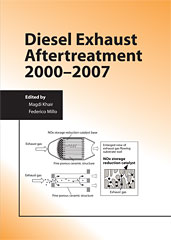Technical Paper
The Effect of Post Injection Coupled with Extremely High Injection Pressure on Combustion Process and Emission Formation in an Off-Road Diesel Engine: A Numerical and Experimental Investigation
2019-09-09
2019-24-0092
In this paper, a numerical and experimental assessment of post injection potential for soot emissions mitigation in an off-road diesel engine is presented, with the aim of supporting hardware selection and engine calibration processes. As a case study, a prototype off-road 3.4 liters 4-cylinder diesel engine developed by Kohler Engines was selected. In order to explore the possibility to comply with Stage V emission standards without a dedicated aftertreatment for NOx, the engine was equipped with a low pressure cooled Exhaust Gas Recirculation (EGR), allowing high EGR rates (above 30%) even at high load. To enable the exploitation of such high EGR rates with acceptable soot penalties, a two-stage turbocharger and an extremely high-pressure fuel injection system (up to 3000 bar) were adopted. Moreover, post injections events were also exploited to further mitigate soot emissions with acceptable Brake Specific Fuel Consumption (BSFC) penalties.

